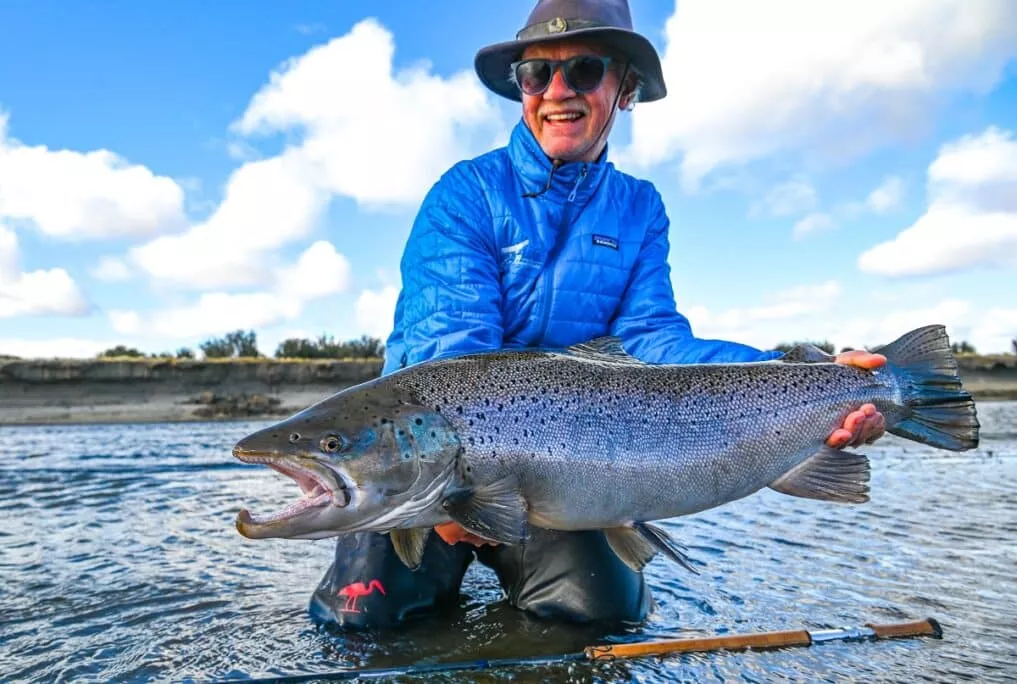Superlifes » Argentina Sea Trout Flies – equipping for destinations from Rio Gallegos to Rio Grande
14-01-2024

How should you build your fly box for the sea trout trip of a lifetime? Argentina is famous for its sea trout rivers from Rio Gallegos in Southern Patagonia to Tierra Del Fuego’s Rio Grande, but the keys to success differ from your typical salmon or brown trout fly fishing. Here are some experiences from trips to sea trout rivers in Argentina and Chile.
Pictures: Solid Adventures
When the Nordic winter is at its coldest, lifestyle salmonid hunters continue their quest on the other side of the world. Others stay put, but probably have Argentina and Chile on their bucket list. The windy plains of Patagonia and Tierra Del Fuego are in fact home to trophy-class sea trout, where the season is at its hottest during the winter months. Even if you haven’t experienced it yourself, chances are you’ve bumped into pictures of these massive creatures on Instagram, tagged to locations like Las Buitreras, Estancia Maria Behety, Villa Maria or Kau Tapen. If you do have the chance to experience Rio Gallegos, Rio Grande, Rio Irigoyen or some other South American sea trout river, you will mostly be fishing with different, but sometimes also the same flies as you would use for Atlantic salmon or brown trout. But which ones exactly?
Sea trout in Argentina are famous for having a soft spot for rubberlegs. Almost all of the local specialty flies are rubberleg buggers of sorts, and these should form the bread-and-butter department of your fly box in several sizes, weights and colors. While the seasoned trout angler will be used to mainly dead-drifting nymphs with upstream casts, in Patagonia rubber-legged nymphs or buggers are more commonly served on the swing or stripped. Attraction colors like yellow and green, as well as more natural olive, black and brown should all be covered in your fly box ranging between sizes #6 to #12. Natural colors are the most important ones, unless rain has colored the river.

Our picks to get you going would be:
If you’ve fished chinook or steelhead, carrying a few intruder-style leeches with you might seem obvious. For an Atlantic salmon or brown trout angler, maybe not so much. Either way, these can be extremely effective in Rio Grande fished mainly on the swing around sunset or “golden hour”, just before the day of fishing day finishes off. As with the buggers, we recommend having both weighted and unweighted options available in the form of Rio Grande Leech and Rio Grande Leech Conehead. Black, white and chartreuse are some of the key colors here.


In addition to EMBs, I-Bugs, Yellow Yummies and other rather Patagonia-specific sea trout flies, any other rubberleg nymphs will also work well (as long as the hook is strong enough). These can be your own favorites for brown trout or char fishing with rubberlegs added to them. Same size and technique guidances apply as for the previous buggers listed.
While we are not huge believers in the exact nymph models or recipe, here are a few that definitely will get the job done whether you are trout fishing on your home river, Chile or Argentina:

As with any kind of fishing, there is no single truth in sea trout fishing – even in Argentina and Chile. We’ve been successful with many “salmon flies” in Rio Gallegos, not least because of a deep trust in certain patterns forged through many positive experiences in the Nordics. Here are a few that we think should be in your box, and not just as a curiosity.

You don’t necessarily need each and every pattern in all possible sizes. Our suggestion is to use this list as a starting point, pick at least a few options for each shade, weight and style, and last but not least contact your guide or lodge for local tips. If you would rather prefer a pre-selected fly collection, you can also just buy one or our Rio Gallegos selection or Rio Grande sea trout fly selections.